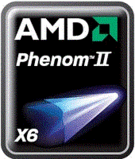When I have tRFC @ 195ns, with DQS training [PERFORM], and then I change the tRFC to 327.5ns, the first cold start requires ~11 minutes to POST. Presumably (but not for sure) this is the time the DQS training requires to make its adjustments.
When I do a subsequent cold start, the time to POST may require some 10 minutes less. Let's suppose that this time, the DQS option recognizes that the RAM is set to its liking, so it doesn't need those extra 10 minutes.
Now, according to what I have read, if I set the DQS training to [SKIP], it will return to "default". This would be very unfortunate if default really means default, because then the RAM would not be functioning optimally.
HOWEVER, if the DQS training were actually to return to my own system's now-established DQS "trainedUSING the settings that were established in previous DQS training, then I'd have the best of both worlds: speed and accuracy.
See what I mean? The first time, you recheck the telephone number to make sure it is right. (Accuracy.) Subsequently, you don't recheck it because you already know it is right. (Speed and accuracy.)
I'm concerned about the DQS "returning to the default setting". The default is [SKIP] DQS training. My mobo, RAM, and CPU are reluctant dance partners, and I need the most optimum settings I can get.
Anybody familiar with DQS training? Thanks.
When I do a subsequent cold start, the time to POST may require some 10 minutes less. Let's suppose that this time, the DQS option recognizes that the RAM is set to its liking, so it doesn't need those extra 10 minutes.
Now, according to what I have read, if I set the DQS training to [SKIP], it will return to "default". This would be very unfortunate if default really means default, because then the RAM would not be functioning optimally.
HOWEVER, if the DQS training were actually to return to my own system's now-established DQS "trainedUSING the settings that were established in previous DQS training, then I'd have the best of both worlds: speed and accuracy.
See what I mean? The first time, you recheck the telephone number to make sure it is right. (Accuracy.) Subsequently, you don't recheck it because you already know it is right. (Speed and accuracy.)
I'm concerned about the DQS "returning to the default setting". The default is [SKIP] DQS training. My mobo, RAM, and CPU are reluctant dance partners, and I need the most optimum settings I can get.
Anybody familiar with DQS training? Thanks.





Comment